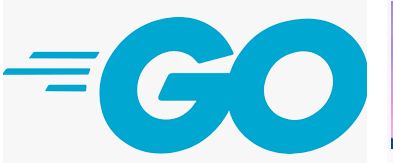Maps is an unordered collection in Go Language with the key and its associated value. They are good for looking up values quickly.
A few important points about the Maps in Go:
- A map is a data structure that gives you an unordered collection of the key/value pairs
- The Go Maps are used to look up a value by its associated key.
- A map is implemented with a hash table, that is providing quicker lookups on the information element and it is simple to retrieve a value by offering the key.
- Maps are unordered collections, and there is no way to predict the sequence in which the key/value pairs will be returned.
- That is why each iteration over a map could return a different sequence.
- The key type must have the operation == and! = defined, like string, int, float.
- Hence arrays, slices, and structs can’t be utilized as key type, but pointers and port types can.
- Structs can be applied as a key once we provide the Key() or Hash() method, to ensure a unique numeric or string key can be calculated in the struct’s fields.
- A map is a reference type
How to declare a map
This is how a map can be declared generally:
var mp map[TyepOfKey]TypeOfValue
An example can be:
var empMap map[int]int
Assigning values
The maps are created with curly brackets, and they have keys and values.
var emp_salary = map[string]string{“Haynes”: “$5000”, “Reema”: “$5500”}
An example of Go map
In this example, we have created a map that stores employee names and their salaries for the demonstration.
package main
import "fmt"
var emp_salary = map[string]string{"Haynes": "$5000", "Reema": "$5500", "Arnonld": "$5200"}
func main() {
fmt.Println(emp_salary )
}
Output:
map[Haynes:$5000 Reema:$5500 Arnonld:$5200]
The example of Insert items in the map
This example shows an alternative way of creating a map with key/value pairs. You can also see adding new key/value pairs below:
package main
import "fmt"
func main() {
emp_salary := make(map[string]string)
fmt.Println("The map before insert\n", emp_salary)
emp_salary["Haynes"] = "$5000"
emp_salary["Reema"] = "$5500"
emp_salary["Arnonld"] = "$5200"
fmt.Println("The map after \n", emp_salary)
}
Output:
The map before insert
map[]
The map after
map[Haynes:$5000 Reema:$5500 Arnonld:$5200]
Note: Creating a map with the make function is explained below.
An example of updating a map
Just extended the above example for updating a map:
package main
import "fmt"
func main() {
emp_salary := make(map[string]string)
fmt.Println("The map before insert\n", emp_salary)
emp_salary["Haynes"] = "$5000"
emp_salary["Reema"] = "$5500"
emp_salary["Arnold"] = "$5200"
fmt.Println("The map insert \n", emp_salary)
emp_salary["Reema"] = "5700"
fmt.Println("The map after update \n", emp_salary)
}
Output:
The map before insert
map[]
The map insert
map[Arnonld:$5200 Haynes:$5000 Reema:$5500]
The map after update
map[Haynes:$5000 Reema:5700 Arnold:$5200]
How to loop through a map
This is an important aspect; to iterate over a map using for loop in Go. For that, the range is also used as shown below:
package main
import "fmt"
func main() {
//A map of employees and thier salary
empSal := map[string] int {"Mike":5000,"Shaggy":3000,"Nana":2000}
/* Displaying map using range*/
for emp := range empSal {
fmt.Println("The Salary of ",emp,"is",empSal[emp])
}
}
Output:
The Salary of Mike is 5000
The Salary of Shaggy is 3000
The Salary of Nana is 2000
An example of deleting items
The delete() function is used to delete an item from a map. It requires the map and the corresponding key that is to be deleted. See the example:
package main
import "fmt"
func main() {
emp_salary := make(map[string]string)
fmt.Println("The map before insert\n", emp_salary)
emp_salary["Haynes"] = "$5000"
emp_salary["Reema"] = "$5500"
emp_salary["Arnold"] = "$5200"
fmt.Println("The map after insert \n", emp_salary)
delete(emp_salary, "Arnonld")
fmt.Println("The map after delete \n", emp_salary)
}
Output:
The map before insert
map[]
The map after insert
map[Reema:$5500 Arnold:$5200 Haynes:$5000]
The map after delete
map[Haynes:$5000 Reema:$5500]
The example of accessing a specific element
package main
import "fmt"
func main() {
emp_salary := make(map[string]string)
emp_salary["Haynes"] = "$5000"
emp_salary["Reema"] = "$5500"
emp_salary["Arnold"] = "$5200"
fmt.Println("The Salary of Haynes = ", emp_salary["Haynes"])
}
Output:
The Salary of Haynes = $5000
How to use make a function for map declaration
As shown in almost all the above examples, we used the make function for creating the maps. The make function takes an argument (which is a map) and it returns an initialized map.
For demos, see the above examples.

